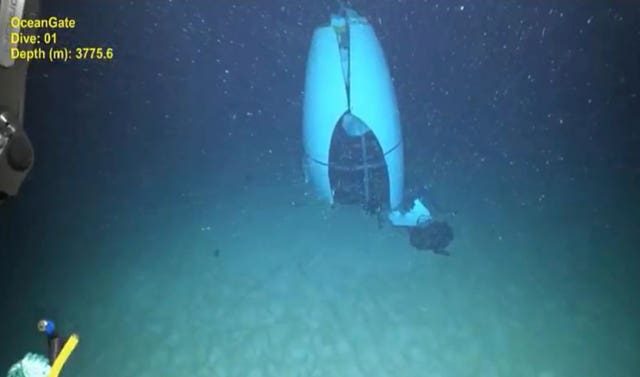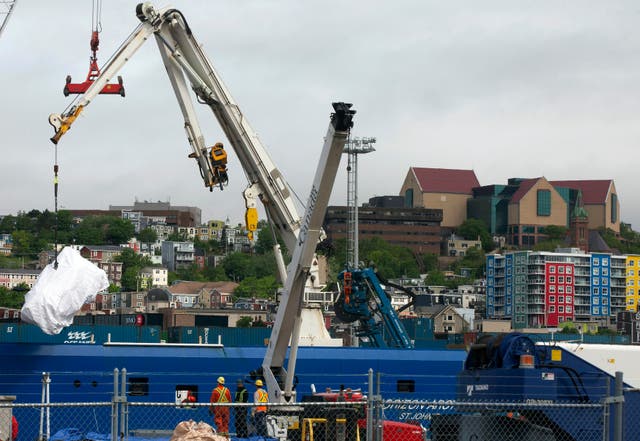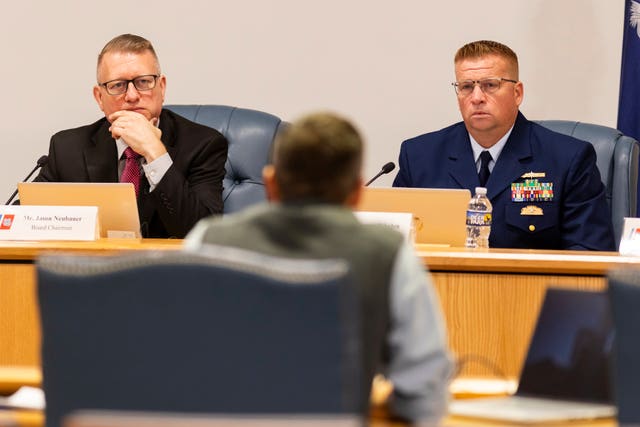
A key employee who labelled a doomed experimental submersible unsafe before its last, fatal voyage testified on Tuesday that the tragedy may have been prevented if the federal safety agency had investigated his complaint.
David Lochridge, OceanGate’s former operations director, is one of the most anticipated witnesses to appear before a commission trying to determine what caused the Titan to implode en route to the wreckage of the Titanic last year, killing all five people on board.
He said he felt let down by the Occupational Safety and Health Administration’s (Osha) decision not to follow through on the complaint.

“I believe that if OSHA had attempted to investigate the seriousness of the concerns I raised on multiple occasions, this tragedy may have been prevented,” he said.
“As a seafarer, I feel deeply disappointed by the system that is meant to protect not only seafarers but the general public as well.”
Mr Lochridge said during his testimony that eight months after he filed an Osha complaint, a caseworker told him the agency had not begun investigating it yet and there were 11 cases ahead of his.
By then, OceanGate was suing Mr Lochridge and he had filed a countersuit.
About 10 months after he filed the complaint, he decided to walk away.
The case was closed and both lawsuits were dropped.
“I gave them nothing, they gave me nothing,” he said of OceanGate.
Earlier in the day, Mr Lochridge said he frequently clashed with OceanGate head Stockton Rush.
“The whole idea behind the company was to make money,” Mr Lochridge said. “There was very little in the way of science.”
Mr Lochridge began giving evidence a day after other witnesses painted a picture of a troubled company that was impatient to get its unconventionally designed craft into the water. The accident set off a worldwide debate about the future of private undersea exploration.
The company, based in Washington state, suspended its operations after the implosion.
OceanGate’s former engineering director, Tony Nissen, began Monday’s evidence, telling investigators that he felt pressured to get the vessel ready to dive and refused to pilot it for a journey several years before Titan’s last trip.
“I’m not getting in it,” Mr Nissen said he told Mr Rush.
When asked if there was pressure to get Titan into the water, Mr Nissen responded, “100%.”
But asked if he felt that the pressure compromised safety decisions and testing, Mr Nissen paused, then replied, “No. And that’s a difficult question to answer because given infinite time and infinite budget, you could do infinite testing.”
OceanGate’s former finance and human resources director, Bonnie Carl, said that Mr Lochridge had characterised the Titan as “unsafe”.
Mr Lochridge is expected to provide more perspective on what caused the implosion.

Coast Guard officials noted at the start of the hearing that the submersible had not been independently reviewed, as is standard practice. That and Titan’s unusual design subjected it to scrutiny in the undersea exploration community.
During the submersible’s final dive on June 18 2023, the crew lost contact after an exchange of texts about the Titan’s depth and weight as it descended.
The support ship Polar Prince then sent repeated messages asking if the Titan could still see the ship on its onboard display.
One of the last messages from Titan’s crew to Polar Prince before the submersible imploded stated, “all good here”, according to a visual re-creation presented earlier in the hearing.
When the submersible was reported overdue, rescuers rushed ships, planes and other equipment to an area about 435 miles (700 kilometres) south of St John’s, Newfoundland.
Wreckage of the Titan was subsequently found on the ocean floor about 330 yards (300 metres) off the bow of the Titanic, Coast Guard officials said.
Scheduled to appear later in the hearing are OceanGate co-founder Guillermo Sohnlein and former scientific director, Steven Ross, according to a list compiled by the Coast Guard.
Numerous guard officials, scientists and government and industry officials are also expected to give evidence.
The US Coast Guard subpoenaed witnesses who were not government employees, said Coast Guard spokesperson Melissa Leake.

Among those not on the hearing witness list is Mr Rush’s widow, Wendy Rush, the company’s communications director.
Asked about her absence, Ms Leake said the Coast Guard does not comment on the reasons for not calling specific individuals to a particular hearing during ongoing investigations. She said it is common for a Marine Board of Investigation to “hold multiple hearing sessions or conduct additional witness depositions for complex cases”.
OceanGate has no full-time employees at this time but will be represented by an attorney during the hearing, the company said in a statement.
It said it has been fully co-operating with the Coast Guard and NTSB investigations since they began.
The time frame for the investigation was initially a year, but the inquiry has taken longer. The ongoing Marine Board of Investigation is the highest level of marine casualty investigation conducted by the Coast Guard.
When the hearing concludes, recommendations will be submitted to the Coast Guard’s commandant.
The National Transportation Safety Board is also conducting an investigation.
OceanGate owned the Titan and brought it on several dives to the Titanic going back to 2021.
Osha officials did not immediately respond to the Associated Press’ request for comment Tuesday.


Comments: Our rules
We want our comments to be a lively and valuable part of our community - a place where readers can debate and engage with the most important local issues. The ability to comment on our stories is a privilege, not a right, however, and that privilege may be withdrawn if it is abused or misused.
Please report any comments that break our rules.
Read the rules hereLast Updated:
Report this comment Cancel